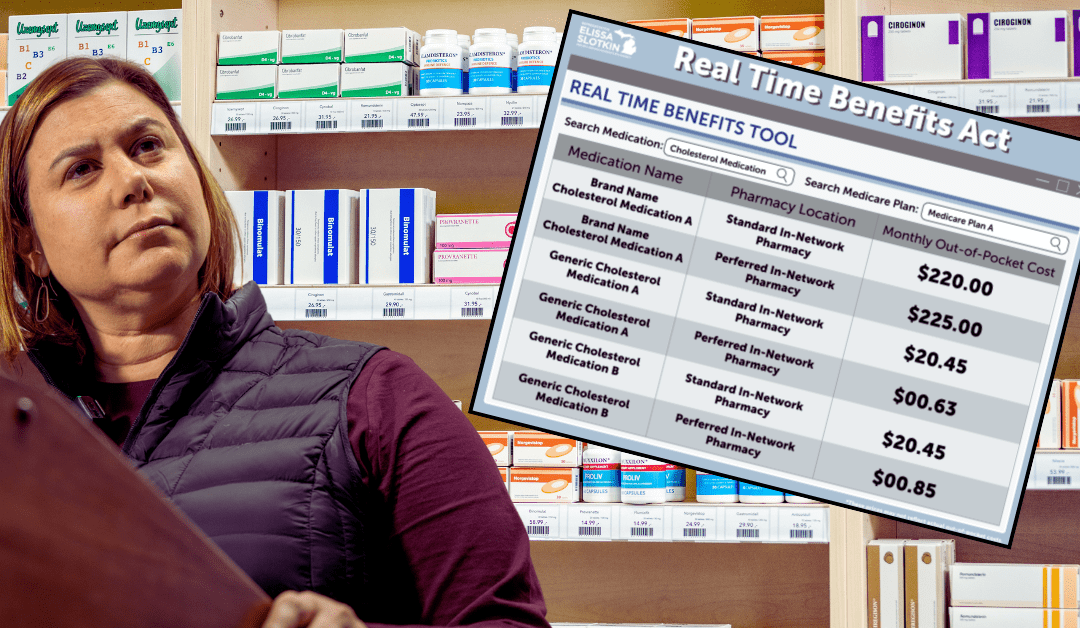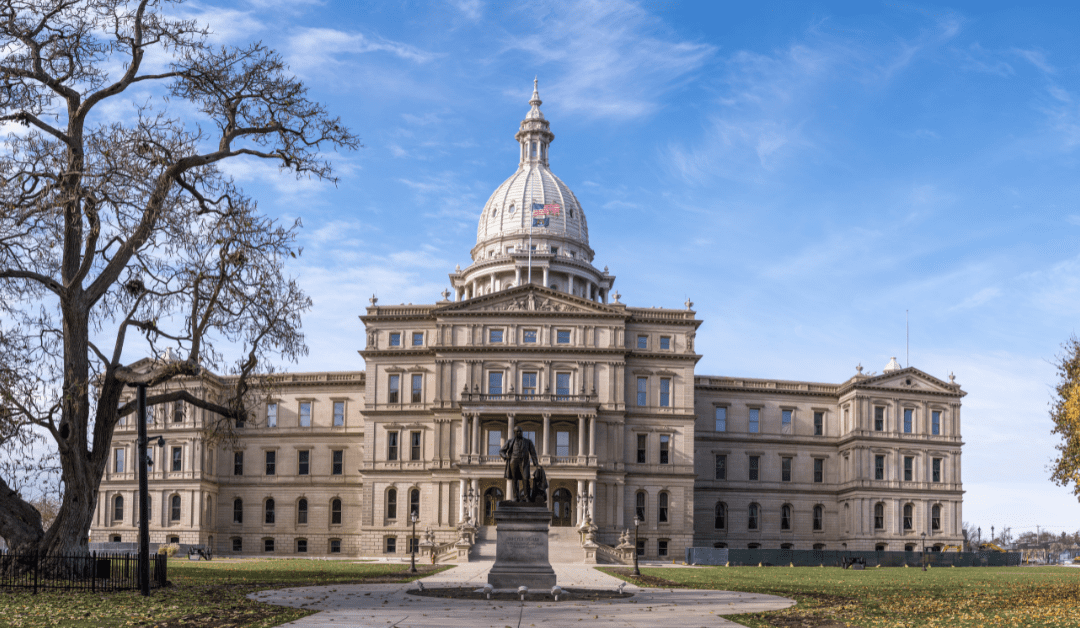
Photo courtesy of Getty Images
Michigan’s High-Speed Internet Office is working—breaking down digital equity barriers and expanding broadband access for rural residents.
Jill Dunham grew up on a horse farm in southeast Ingham County.
“I showed my horse at the county fair every year,” she said. “I understand rural living.”
Today, Dunham’s connection to life in rural Michigan helps her pursue a goal beyond blue ribbons at the fair: getting broadband internet access to the state’s underserved regions.
“Internet has become a basic utility with telemedicine, school children needing it to do homework, and many people with the opportunity to work from home—if only they had reliable high-speed internet,” Dunham said.
In her role as Broadband Project Manager for Allegan County, Dunham—who has over 40 years of experience working in telecommunications—oversees efforts to make high-speed internet access a reality for all of Allegan County’s 121,000 residents. When the project started, around 10,000 Allegan County addresses lacked reliable access to high-speed internet. The reason?
“Expanding access to areas less densely populated has always been met with the stumbling block of funding,” Dunham said.
The Michigan High-Speed Internet Office (MIHI) says the issue is statewide. According to MIHI data, approximately 212,000 households in the state don’t have high-speed internet access. An additional 865,000 homes face digital equity challenges like lack of access to devices, poor digital literacy, or service affordability barriers.
But since the office launched in 2021, it’s made good strides for Michiganders. With the additional support of funding from President Joe Biden’s American Rescue Plan Act (ARPA) and the Bipartisan Infrastructure Law, also known as the Infrastructure Investment and Jobs Act (IIJA), Allegan County’s project and others focused on expanding broadband access throughout the Great Lakes State finally have adequate financial backing.
$1.5 billion in federal funding to expand broadband in Michigan
In 2023, Gov. Gretchen Whitmer announced that Michigan would receive more than $1.5 billion—the fourth-highest amount in the nation—through the IIJA to expand high-speed internet access across the state’s less-connected areas, by way of the Broadband Equity Access and Deployment (BEAD) program.
And just last week, Lt. Gov. Garlin Gilchrist unveiled the Michigan Digital Equity Plan, which will use more than $20 million in funding from the National Telecommunications and Information Agency (NTIA) to specifically address systemic barriers to digital access throughout the state.
Eric Frederick, who focuses on broadband expansion in his role as Chief Connectivity Officer at MIHI, says efforts like BEAD and the Digital Equity Plan will push the office toward its goal of ensuring high-speed internet for every Michigan resident, even in the state’s most rural areas.
Frederick points specifically to the IIJA funding and resulting BEAD initiative as a turning point for digital equity and expansion in Michigan.
“It was kind of like the Super Bowl for this kind of work,” he said. “The BEAD program really is this once-in-a-generation opportunity to get to universal availability of high-speed internet.”
Broadband access gaps exist in Michigan’s rural and isolated communities–as well as historically underserved communities that have slipped through the cracks of digital connectivity. When the numbers are broken down, Frederick says, the amount of households or businesses that are still fully unconnected remains relatively low: the aforementioned 212,000 locations in a state of about 4.1 million households.
“That’s not a lot in comparison, but it’s a lot to them,” he said. “And it means that they’ll have access to modern society, to the modern economy, to telehealth, to all the things that everybody else has access to. This final 10% or so will be able to also have access to it. And I think that’s the most exciting part. I think this is a chance to do something really big in public service and make sure that we are not leaving anyone behind.”
Program after program is reaching rural Michigan
BEAD comes on the heels of a similar broadband expansion effort in Michigan known as the Realizing Opportunity with Broadband Infrastructure Networks (ROBIN) grant program, which allotted a smaller pot of funding under the Coronavirus Capital Projects Fund.
Frederick says ROBIN is just one of a handful of other efforts underway in the state. He hopes BEAD will work in tandem with these programs to complete MIHI’s total connectivity goal.
The largest of these existing programs is the Rural Digital Opportunity Fund through the Federal Communications Commission (FCC), he said. “They’re connecting 200,000 homes now, and I can’t build it there because they’re already funded by the federal government. But BEAD is gonna get in between where they missed.”
In Allegan County, Dunham says that ROBIN funding, money received through ARPA, and separate funding from Michigan telecommunications company 123NET have combined to make widespread broadband access attainable to residents. Allegan County’s first resident was connected under the plan in November 2023. In recent months, momentum has been slow but steady, with around five additional residents gaining access.
Frederick says projects like Allegan County’s point to the difference that broadband makes in the lives of everyday Michiganders. He recalls hearing about that first newly connected resident in Allegan County, a woman whose connectivity goals were simple yet meaningful.
“She likes to play games online,” he said. “Whatever that means for her, that’s what she wanted to do. And she’d been talking to the county for so long to get better internet access.”
Dunham says the County’s goals are within sight.
“The 123NET project is planned to be completed by the end of 2025.” she explained. “A few areas that are funded by the FCC Rural Digital Opportunity Fund program could stretch into 2026 or 2027, but our goal is to make sure all residents have access to high-speed internet. We have identified some minor gaps and the county will be working with all providers to ensure they’re covered with BEAD funding.”

In remote locations like Michigan’s Isle Royale National Park, broadband expansion efforts are limited by the Great Lakes and other geographic features.
Great Lakes, great barriers to connectivity
Outside of Allegan County, Michigan faces unique challenges in broadband connectivity because of its geographic features, Frederick said.
“The remoteness of some parts of our state is a barrier. For example, there are locations on Isle Royale that are considered broadband serviceable locations and will need to get service through the BEAD program somehow. I’m not gonna build fiber on the bottom of Lake Superior,” Frederick said. “So we’re gonna have to figure out something to get to places like that.”
This commitment to preserving Michigan’s natural beauty while expanding access is another reason why increased funding is so important, Frederick explained.
“Other barriers such as our topography, our vegetation, our beautiful waterways—I mean, we don’t wanna disrupt any of that either. All those things make Michigan great, but they can be a barrier to expansion, which does raise costs. So we wanna make sure that we’re expanding responsibly and that our grantees are gonna be building that infrastructure responsibly.”
Allowing Michiganders to self-report internet needs
Thanks to a BEAD-backed initiative called the State Challenge Process, everyday Michiganders can report connectivity gaps directly to MIHI and help bring broadband to their communities.
MIHI kicked off its project with a general connectivity map from the FCC known as the National Broadband Map. Through the State Challenge Process, residents can look up their locations on the map and “challenge” areas that might be incorrectly identified as having high-speed access.
“The idea is to refine that map as much as we can before we start rolling out BEAD dollars and make sure that we know exactly which homes, businesses, and institutions need to be built to,” Frederick said.
Michiganders can take a look at the map and report connectivity data related to their own neighborhoods or homes immediately by visiting the State Challenge Process website.
Frederick says digital equity and broadband access should matter to all Michiganders—even those who don’t face barriers to high-speed internet connectivity.
“If we’re not all connected, we can’t move forward as a state in many, many different ways. If we can get to one hundred percent availability and improve the affordability of devices and digital literacy and increase that subscribership and actually use of that technology, there’s so much more we can do as a state, as an economy, as a community,” he said.
“It’s very easy to forget that some people are disconnected when, yeah, I can’t even tell you how many devices are connected that are sitting around me right now. We take that for granted and it shouldn’t be a luxury. It should be something that everybody can get access to.”
Politics

Slotkin urges Michiganders to compare prices before buying prescription drugs
A law sponsored by Congresswoman Elissa Slotkin is helping patients compare prices for different prescription drugs at different pharmacies—saving...

‘Melody’s Law’ would explicitly criminalize necrophilia in Michigan
BY ANNA LIZ NICHOLS, MICHIGAN ADVANCE MICHIGAN—There is no law on the books in Michigan that expressly criminalizes engaging in sexual conduct with...

SEIU workers ahead of NFL Draft: We are ‘the backbone of Detroit’
BY KEN COLEMAN, MICHIGAN ADVANCE MICHIGAN—A day ahead of the National Football League annual draft being held in Detroit, Service Employees...
Local News

The 9 best pizzas in Michigan, according to our research
When it comes to finding the best pizza in Michigan, the options are endless. From the bustling city of Detroit to the quaint town of Cadillac,...

Lions trade up in first round of NFL draft, take Alabama cornerback Terrion Arnold
ALLEN PARK—The Detroit Lions made a move to address their secondary, grabbing Alabama cornerback Terrion Arnold with the No. 24 pick in the NFL...






